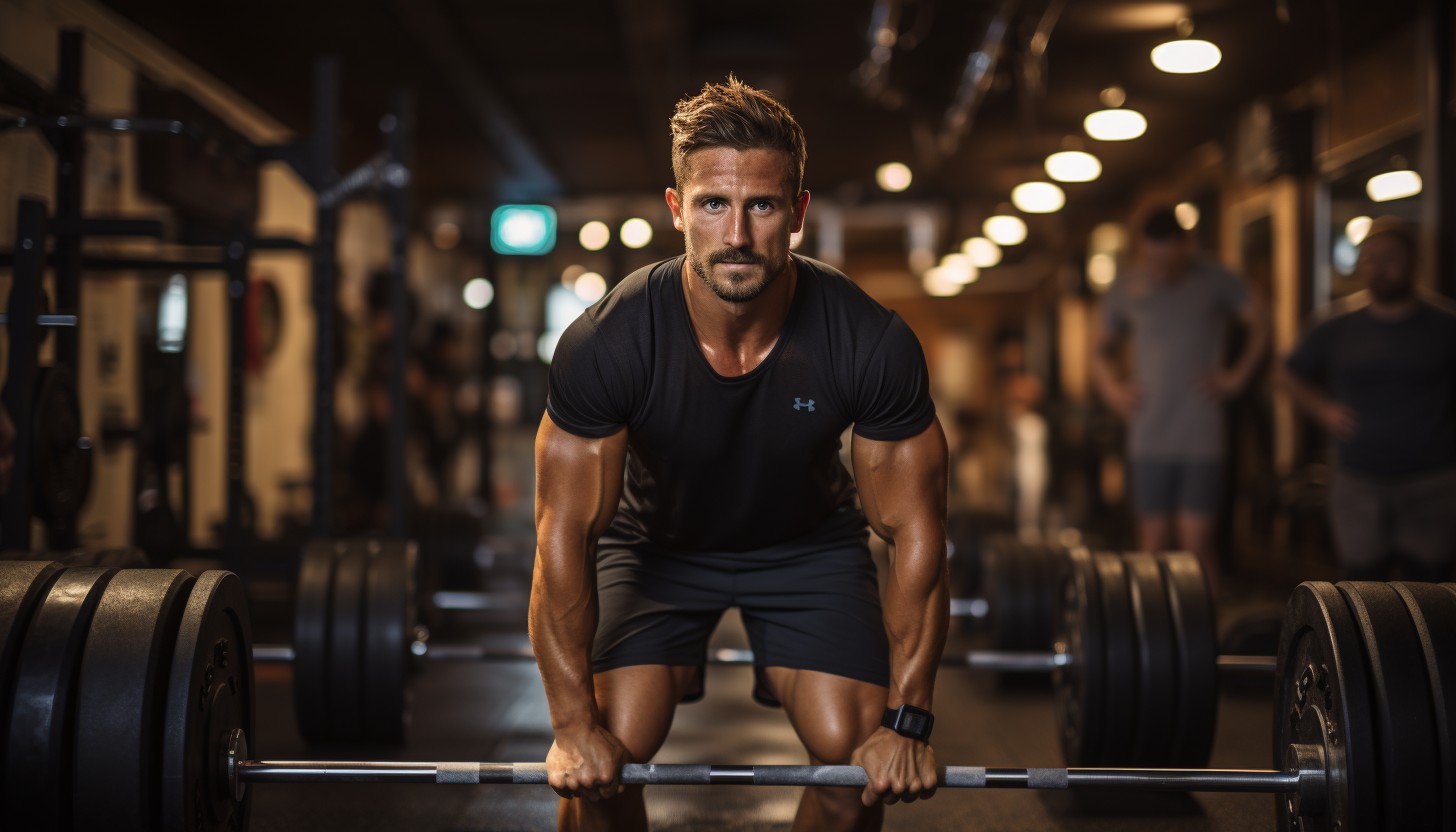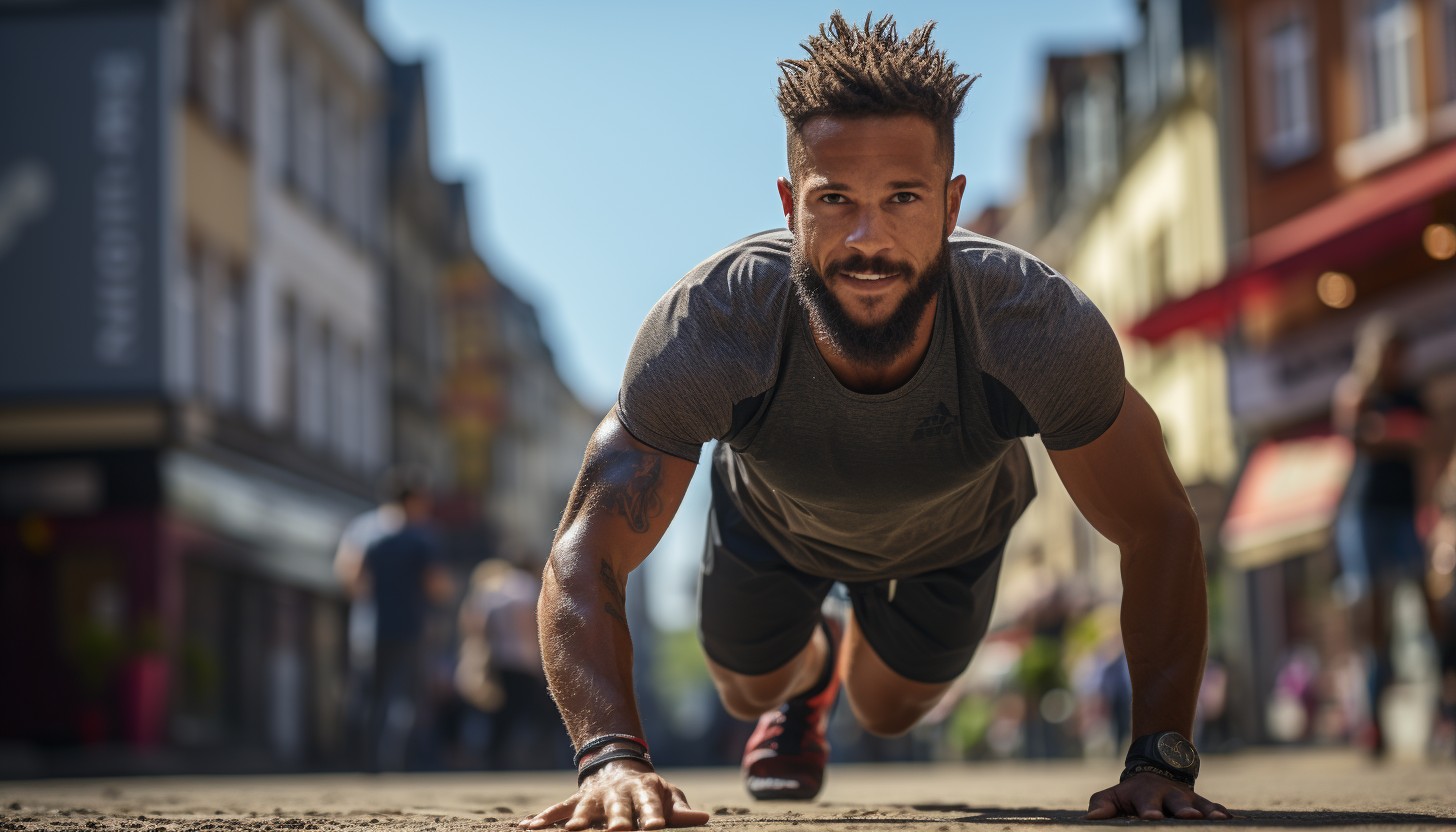Strength Training for Half Marathon Runners: Targeting Key Muscles

Are you a half marathon runner looking to improve your performance?
Strengthening key muscles is essential for increasing speed, endurance, and preventing injuries.
In this article, we will explore the importance of strength training and target the upper body, lower body, and core muscles specifically for half marathon runners.
Get ready to take your training to the next level with evidence-based exercises that will help you cross that finish line with confidence!
The Importance of Strength Training for Half Marathon Runners

Strength training is crucial for half marathon runners because it helps them build the key muscles needed for endurance and injury prevention. Incorporating strength training into your half marathon training schedule has numerous benefits.
Firstly, it improves muscular strength and power, allowing you to maintain proper running form throughout the race. Stronger muscles also reduce the risk of common running injuries such as shin splints and IT band syndrome.
To incorporate strength training into your half marathon training schedule, aim for two to three sessions per week. Make sure to target the major muscle groups involved in running, including your legs, core, and upper body. Include exercises like squats, lunges, deadlifts, planks, push-ups, and rows.
When performing these exercises, focus on using proper form and gradually increasing the intensity over time. Start with lighter weights or bodyweight exercises and gradually add more resistance as you get stronger.
Remember to listen to your body and rest when necessary. Overtraining can lead to fatigue and increased risk of injury. It’s also important to prioritize recovery by incorporating rest days into your weekly routine.
Key Muscles for Half Marathon Runners: Upper Body

To enhance your performance during a half marathon, it’s important to focus on the muscles in your upper body. While running primarily engages your lower body, neglecting your upper body can lead to imbalances and decreased efficiency.
Incorporating upper body strength exercises into your training regimen can offer several benefits:
1. Improved posture: Strengthening the muscles in your upper back, shoulders, and chest helps maintain proper posture while running. This reduces fatigue and allows for better breathing.
2. Increased arm swing power: Strong arms contribute to a powerful arm swing, which drives forward momentum during running. Engaging the muscles in your arms and shoulders can help you maintain a faster pace.
3. Enhanced overall stability: A strong core is essential for maintaining stability and balance while running long distances. By incorporating exercises that target your core, such as planks or Russian twists, you improve your ability to stabilize yourself during each stride.
To specifically target these key muscles, include exercises like push-ups, pull-ups, shoulder presses, and rows into your strength training routine. Aim for 2-3 sessions per week focusing on different muscle groups each time.
Key Muscles for Half Marathon Runners: Lower Body

For optimal performance during a half marathon, it’s crucial to focus on developing the muscles in your lower body. Building strength in your quadriceps and hamstrings is essential for endurance and speed. To strengthen your quads, try exercises like squats, lunges, and step-ups. These exercises target the front of your thighs, helping you power through each stride. Incorporating hamstring strengthening exercises into your training routine is equally important. Exercises such as deadlifts, hamstring curls, and glute bridges activate the back of your thighs, improving stability and preventing injuries.
By regularly performing quad and hamstring strengthening exercises, you will not only increase muscle strength but also enhance overall running performance. Stronger quads allow you to generate more force with each step while stronger hamstrings provide better support for the knees and hips.
As you continue to work on developing the muscles in your lower body, it’s important to remember that core strength plays a vital role in half marathon running as well. A strong core improves posture, stability, and balance – all essential components for efficient running form. Transitioning into core strength exercises will further enhance your performance during a half marathon.
Next Subtopic: ‘Core Strength for Half Marathon Runners
Core Strength for Half Marathon Runners

As you focus on improving your core strength, engaging in exercises that target your abdominal muscles and lower back will greatly benefit your half marathon performance. Core stability plays a crucial role in maintaining proper running form and preventing injuries.
Here are three key reasons why developing strong abdominal muscles is essential for half marathon runners:
1. Improved posture: Strong abdominals help maintain an upright posture during long-distance running, reducing strain on the lower back and minimizing the risk of developing muscle imbalances or overuse injuries.
2. Enhanced power transfer: A strong core allows for efficient power transfer from the upper body to the lower body, enabling you to generate more force with each stride and improve overall running speed.
3. Injury prevention: Weak abdominal muscles can lead to poor pelvic alignment, placing extra stress on the lower back and hip joints. Strengthening your core helps stabilize these areas, reducing the likelihood of common running injuries such as low back pain or IT band syndrome.
To develop greater abdominal strength, incorporate exercises like planks, Russian twists, and mountain climbers into your training routine. Aim for two to three sessions per week focusing on core stability exercises alongside your regular running workouts. Remember to prioritize proper form and gradually increase intensity to avoid injury while maximizing benefits.
Cross-Training Exercises for Half Marathon Runners

Incorporate cross-training exercises like cycling, swimming, or yoga into your routine to improve overall fitness and prevent overuse injuries. Yoga, in particular, offers numerous benefits for half marathon runners. Not only does it help increase flexibility and balance, but it also promotes mental focus and relaxation. This can be especially helpful during long-distance running when fatigue and mental exhaustion can set in.
Yoga poses such as downward dog, warrior I and II, and tree pose can strengthen the muscles that are crucial for running – including the quadriceps, hamstrings, calves, glutes, and core. Additionally, yoga helps improve breathing techniques which can enhance endurance during races.
Another form of cross-training that can be beneficial for half marathon runners is plyometric exercises. These explosive movements – such as squat jumps or box jumps – help develop power and speed by engaging fast-twitch muscle fibers. Plyometrics also contribute to improved coordination and agility.
Incorporating cross-training exercises like yoga and plyometrics into your routine not only enhances your overall fitness but also helps prevent overuse injuries by targeting different muscle groups. So go ahead and give these workouts a try to take your half marathon training to the next level!
Conclusion
So there you have it, fellow half marathon runners! Strength training is a crucial component of your training regimen.
By targeting key muscles in both the upper and lower body, you can improve your performance and reduce the risk of injury.
And here’s an interesting statistic to keep you engaged: studies have shown that incorporating strength training into your routine can increase running economy by up to 8%.
So don’t neglect those weights and resistance bands – they could be the key to reaching your personal best!






